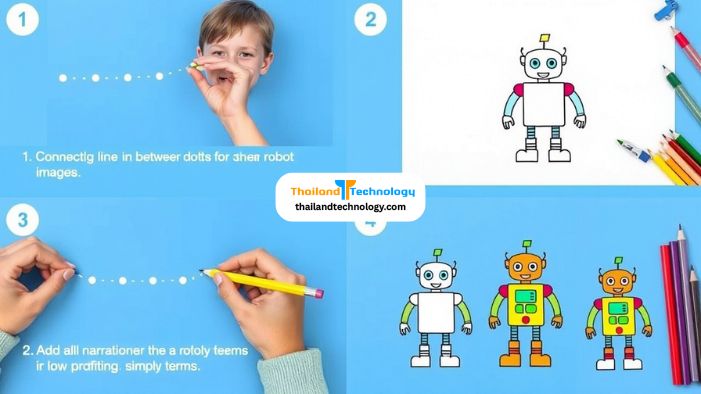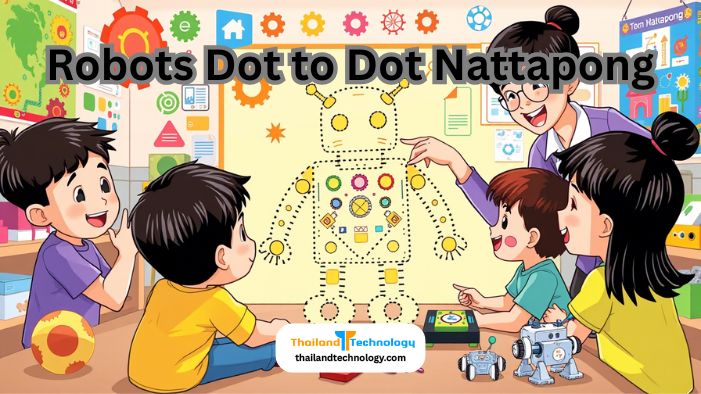Robots Dot to Dot Nattapong is a fun activity where you connect numbered dots to make pictures of robots. Instead of just drawing simple shapes like animals or trees, this activity shows cool robot designs. You start by joining dots in order, and a robot picture appears!
This idea was created by someone named Nattapong, who wanted to help kids learn about robots in a fun way. By turning a simple dot-to-dot puzzle into something related to robots, kids can enjoy learning about science and technology without even noticing.
Why Robots Dot to Dot Nattapong Is Great for Learning
It Makes STEM Easy and Fun
STEM stands for Science, Technology, Engineering, and Math. These subjects can be hard and boring for some kids. But Robots Dot to Dot Nattapong makes STEM fun by mixing learning with play. When kids connect the dots, they practice counting, following steps, and thinking carefully.

Builds Important Skills
- Counting and Numbers: Kids learn how to count and recognize numbers as they connect dots in the right order.
- Focus and Patience: The activity helps kids pay attention and finish a task.
- Creativity: After finishing the robot, kids can color it or imagine what it does.
- Basic Robotics Ideas: By making robot pictures, kids start to understand how robots are built from parts.
How Does It Work?
Step 1: Look at the Dots
You will see many dots on a page. Each dot has a number next to it. At first, the dots look random.
Step 2: Connect the Dots in Order
Start at number 1, then connect to number 2, then 3, and so on. Slowly, lines will form parts of a robot.

Step 3: See the Robot Picture
When you finish, you see a robot image. It could be a friendly robot, a space robot, or a cool machine.
Step 4: Add Color and Stories
You can color your robot or make up a story about it. Maybe your robot helps people, explores space, or builds things.
Why Parents and Teachers Like It
No Screens Needed
This activity works with just paper and pencil. It gives kids a break from screens but still keeps their brains busy.

Easy for Classrooms and Home
Teachers use it in schools because it fits easily in lessons. Parents love it at home for quiet time or rainy days.
Kids Can Do It Alone or With Friends
It’s simple enough for kids to do by themselves or work together with friends. It helps build confidence as they solve the puzzle.
Real Stories From Kids
Nine-year-old Liam used to find science boring. But when his teacher gave him a Robots Dot to Dot Nattapong puzzle, he was hooked. “It’s like a secret code,” Liam said. “I didn’t even know I was learning!”
Kids like Liam find this activity fun and don’t realize they are practicing important skills.
How to Get Started
- Pick an easy puzzle with fewer dots at first.
- Help kids follow the numbers and connect dots slowly.
- After finishing, encourage them to color and name their robot.
- Ask kids what their robot might do or how it works.
More Ways Robots Dot to Dot Nattapong Helps Learning
Develops Hand-Eye Coordination
Drawing lines between dots helps kids improve their hand movements and control.
Encourages Logical Thinking
Kids learn to follow steps and think about the order of numbers.
Sparks Interest in Science and Tech
Early exposure to robot themes can make kids curious about real robots and technology later on.
What Makes Robots Dot to Dot Nattapong Different?
- It is easy and cheap. Just a paper and pencil.
- It mixes art and science in one fun activity.
- Kids of many ages can enjoy it.
- It grows with kids — puzzles can get harder over time.
Frequently Asked Questions
Conclusion
Robots Dot to Dot Nattapong is a smart way to help kids learn about robots and STEM without stress. It brings together art, play, and learning. This activity can make kids excited about science and help them practice counting, focus, and creativity.
If you want your kids to enjoy STEM, try this fun dot-to-dot robot game. It’s easy, screen-free, and full of learning.











